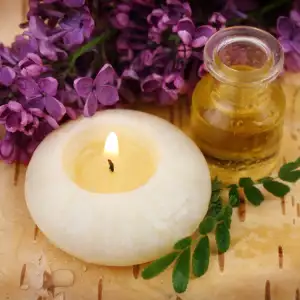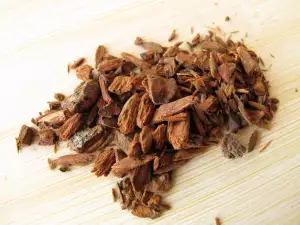Lilac / Syringa L. / is a beautiful flowering shrub that is second only to the rose in quality and popularity. Тhe birthplace of this amazing bush is Persia, where merchants carried it to Vienna 400 years ago. The lilac is a representative of the olive family.
From Vienna, lilac quickly spread throughout Europe and to this day, its fame is undeniable. Lilac is a universal plant for landscaping. Relatively frost-resistant, lilacs have long and fragrant blooming periods, and very beautiful and dense crowns, worthy of admiration.
The lilac is a shrub or small tree reaching up to 16.5 ft (5 meters) in height. It is found in gardens and yards, parks and boulevards. You can see it in fields, as well as on the beach and on steep mountains.
It can grow not only on fertile soils, but also in sandy, calcareous and stony soils. The only places it does not tolerate are waterlogged soils and wetlands. It prefers sunny places, but thrives in penumbra too. Lilac needs no special care because it is resistant to frost and drought.
The leaves of lilac are heart-shaped, intensely green and their ends are smooth. They are located opposite of each other on the branches. The beautiful flowers of lilac are clustered in panicles and develop from the uppermost side buds. Lilac blooms in April-May in pink, white, blue, violet, purple. It can even be seen in yellow.

Composition of lilac
Flowers of lilac contain essential oil, dyes, glycosides, salts, organic acids, vitamin C and farnesol, which confers extraordinary aromas. The leaves contain sinigrin, vitamin C and other substances.
Growing lilacs
Lilac can be grown in the yard, or in a pot at home. Lilac in the yard is unpretentious and durable – it resists both extreme cold and summer heat, defends itself successfully against diseases and pests. If you want to have more than one lilac in your yard, do not select varieties with similar characteristics, because you will lose the effect of their beauty.
Caring for lilac is far from complex, and one of the most important things you need to know regarding this bush is pruning. The brush must be removed immediately after the end of the flowering cycle. This must be done very carefully, so as not to damage the branches next to them, on which new flower buds will set.
In the autumn of the upcoming year, pruned lilacs will not bloom. Pruning also consists of the elimination of weak, dry and ingrowing branches. Wild shoots should also be cut. The branches of lilac however, should never be broken. Trimming of excess branches must be done with sharp and clean instruments, and those areas must be plastered with burnt lime or other special substances.
The yard for planting lilacs must be well lit, but only during the first part of the day. Before planting, construct a decent drainage and make sure the soil is pH neutral or slightly acidic, enriched with fertilizers containing magnesium.

If you decide to grow lilac at home, it is best to procure a two-year bush in autumn. The bush can hibernate in a box on the balcony for the winter, but you must create conditions to avoid freezing of the roots. In early spring, the bush is removed, the roots are trimmed slightly and planted in a pot with a diameter of about 7″ (18 cm).
After planting, thoroughly water and trim the bush. Pruning is performed in order for each branch to have 3-4 remaining pairs of buds, depending on the level of development of the crown. For 10-15 days, keep the pot in a sunny and warm place and have it regularly watered. Then put it on the balcony and plant it in the box.
During the summer, regularly water the lilacs. Top them once a week with a mixture of cow manure. During the growth period, root malformations and emerging buds are removed. Such care should continue until mid-June.
Benefits of lilac
The spectacular aroma of lilac is used in numerous cosmetic products. Primarily used are the leaves, flowers and buds that are high in micronutrients, tannins, glycosides and phytohormones. These agents have anti-inflammatory, analgesic and cleansing effects on the skin. Lilac is used in the perfume industry.
The flowers of lilac help in cleansing the body and stopping gout. Pour brandy over the flowers, so as to cover them with 1-2 fingers of depth from the top. Keep the dish in complete darkness for two weeks, then filter it. Drink 20-30 drops with a little water, 2-3 times per day. For arthritis, the tincture is rubbed on the painful areas.











